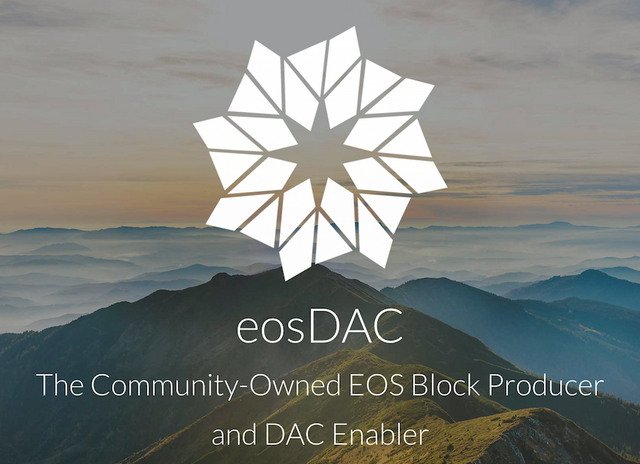eosDAC quick retrospective and future thoughts
As we move ever closer to giving full control of eosDAC over to its community, it is good to look back at some of the key challenges that have been faced and some of the things that have been learned along the way. The powerful concept is in its infancy, we have seen that code needs to be made bulletproof and that scaling isn’t trivial.
Since the EOS Mainnet launch, eosdacserver (the Block producer account of eosDAC) has produced hundreds of thousands of blocks on the EOS Mainnet. It has been an interesting and challenging time for everyone in the EOS ecosystem and eosDAC has delivered on its goals of excellence in block production through great technical contributions and leadership. eosDAC remains committed to supporting the EOS Mainnet and will continue to provide assistance wherever needed.
One of the major issues with setting up a Decentralised Autonomous Community is how it can interface with traditional establishments, such as governments and banks, in terms of legal aspects such as regulation and intellectual property. This is a major issue since many DACs need to pay for services in fiat currencies. eosDAC engaged with lawyers from the very outset to look at how the to structure the token creation and distribution and how to institute a workable constitution. The constitution of eosDAC has undergone many iterations and it is important to consider it as complementary to the smart contract code.
eosDAC originally set up its service entity in Anguilla but it proved complex to set up a functional service company there and it began to make more sense to have multiple service companies. Therefore, eosDAC members are actively setting up service companies to decentralise the functions of DACs and its intellectual property. There are many issues to resolve but people involved with eosDAC are committed to learn and adapt.
All organisations need to make decisions and execute their agreements. However, a decentralised organisation can suffer from paralysis because of inability to reach quorums or enough informed consensus. It can be difficult for everyone to stay informed of important points, therefore it makes sense for delegates to be elected to make decisions on behalf of their community. eosDAC took some of the concepts from EOS around delegated custodianship and will begin the custodian election process shortly.
Getting members to be engaged is a continual challenge and it is clear that DACs need to invest heavily in community engagement. eosDAC wants to help the EOS ecosystem to prosper and create win-wins with other projects whose communities also benefit. Therefore eosDAC urges all EOS communities to check their eosDAC holdings, register and vote.
There are a few basic elements which form the eosDAC model. From a smart contract perspective this is made up of a token and membership contract, a custodian contract and a proposals contract. The token/membership contract which has been in use for a while. The custodian contract is deployed on testnets, undergoing final reviews and is close to being uploaded.
Individuals and groups involved with eosDAC needs to have agreed worker proposals to work on projects. The active proposals have all been published and the details are available onchain and via Steem posts. The proposal system is currently a manual process but the proposal contract design is being informed by insights being gained.
Aside from the contracts and the linked UX, eosDAC has developed a token explorer, a token wallet and an airdrop tool which should be valuable for other projects and DACs. Another useful element being actively refined are the multisig controls which the DAC already uses to pay out work proposals alongside time locks which will help to protect funds.
Everyone involved in eosDAC is looking forward to continued development of our tools, our DAC toolkit and our experimental DAC Chain. All of which will be used to enable future DACs using the eosio software. No one is completely sure what will happen with eosDAC in the future, will it focus on block production or diversify? Will it be run by a completely different set of people? Will it implement machine learning and try to automate as many tasks as possible. One thing is certain, however - new things are possible when token holders register and bring their Imaginations and skills to the DAC. In the words of Margaret Mead - now immortalised as an Easter egg in block 191 of the EOS MainNet - "Never doubt that a small group of thoughtful, committed citizens can change the world; indeed, it's the only thing that ever has."
-R.A.

Please vote for eosdacserver
Join our newsletter to stay informed and follow us on your favorite social media platform:
Steemit | Discord | Telegram | Facebook | Twitter | Google-plus | Github | Instagram | Linkedin | Medium | Reddit | YouTube | Weibo| VK| Bihu